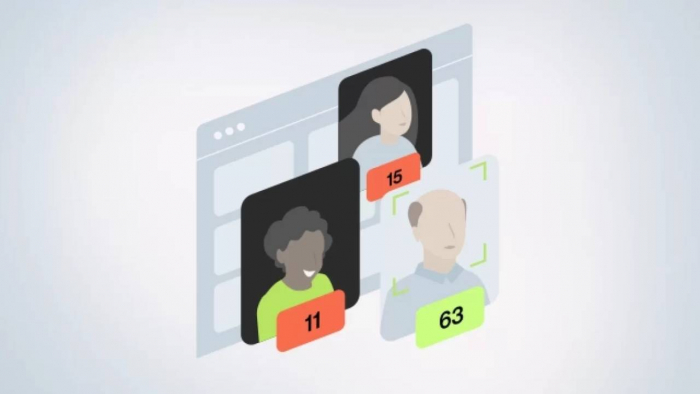Understanding Social Media Algorithms in 2025
Social media algorithms are AI-powered systems that rank content in users' feeds based on multiple signals such as user preferences, behavior patterns, and interactions. These algorithms are the unseen forces that dictate which posts we see and engage with on platforms like Instagram, TikTok, Twitter, and Facebook.
The primary goal of these algorithms is to drive user engagement. They ensure that the content shown is personalized and relevant, boosting user satisfaction and interaction with the platform. By showcasing posts that align with individual interests, the algorithm helps platforms keep users active and engaged, thereby increasing time spent on the site.
Relevance now:
Social media algorithms have become highly sophisticated, relying on deep learning and advanced AI techniques. They now do more than just surface content based on past interactions; they predict future behavior, user preferences, and provide an experience tailored to each user’s unique digital history. These algorithms play a critical role in determining trends, viral content, and the overall user experience on social platforms.
The Evolution of Algorithms: From Chronological to Predictive
Early Days:
Initially, social media platforms, such as Facebook and Twitter, displayed content in reverse chronological order. This simple timeline allowed users to see the most recent posts first, with no algorithmic curation. However, as the number of posts grew, this approach became less practical. With the rise of user-generated content, platforms began prioritizing posts based on engagement metrics such as likes, comments, and shares. This shift aimed to ensure that content deemed more popular or relevant would be shown to a wider audience. Content that received higher engagement was ranked higher in users' feeds. Predict what users are likely to interact with in the future, adjusting their feed dynamically based on every user’s unique interactions. Content discovery is now predictive, with AI continuously optimizing for user satisfaction.
Factors Influencing Algorithm Decisions
- Engagement Metrics: Likes, comments, shares, and saves are the primary indicators of content quality and relevance. Content that generates higher engagement signals is more likely to be promoted. For example, Instagram's algorithm rewards posts that users save or share, signaling that they consider the content highly valuable.
- Content Type: Different types of content (videos, images, carousels, and reels) are treated differently by the algorithms. Short-form videos like Instagram Reels, YouTube shorts, and TikTok videos are receiving more algorithmic favor due to their high engagement rates and ability to hold user attention.
- User Behavior: The amount of time a user spends on a post, their scrolling behavior, and their interaction history significantly influence what appears in their feed. If a user interacts more with videos, for instance, the algorithm will prioritize video content for them.
- Recency: Recency still plays a role in what users see. Content that is timely and relevant to current trends or events is prioritized to keep the feed fresh and up-to-date.
- Relationships: The strength of a user’s relationship with the account that posted the content is another factor. Social platforms recognize users' stronger ties with friends, family, and followed accounts and prioritize content from these sources. For example, Facebook shows posts from family and close friends more frequently than from distant acquaintances.
Platform-Specific Algorithm Insights
- Instagram:
Instagram's algorithm places a stronger emphasis on the quality of engagement rather than sheer quantity. Saves, shares, and comments from close friends are now weighted more heavily than likes, allowing for more intimate, personalized feeds. Hashtags also play a key role in content discovery. - TikTok:
TikTok's algorithm excels at content discovery and virality. It has the perfect ability to surface content that aligns with users' current mood or trends, not just their past behavior. The "For You" feed continuously evolves, with the platform's machine learning models improving their ability to predict what will keep users scrolling. - X (formerly Twitter):
X introduced a "For You" feed, which promotes content based on users’ interests, independent of their account follows. The platform's algorithm is now centered around amplifying personalized content rather than just showing updates from followed accounts. Tweets, likes, and retweets that reflect users' current interests help curate their feed. - LinkedIn: LinkedIn's algorithm prioritizes professional relevance over social updates. LinkedIn's algorithm focuses on content related to job changes, industry news, and thought leadership. The algorithm boosts content from colleagues or industry peers over random posts, aiming to create a more professional feed that aligns with career growth.
Ethical Considerations and Challenges
Filter Bubbles:
One of the main concerns with social media algorithms is the creation of filter bubbles. By only showing content that aligns with a user’s existing beliefs, algorithms can limit exposure to diverse viewpoints. This contributes to echo chambers, where users are only exposed to information they agree with. Misinformation is another factor. The algorithmic prioritization of sensational or engaging content can inadvertently promote misinformation. Algorithms favor content that generates strong engagement, regardless of its truthfulness. This has become a significant concern, especially with political or health-related content, as false information can spread rapidly. The extensive data collection needed to power personalized algorithms raises privacy concerns. Platforms collect detailed behavioral data to predict user interests, but users are often unaware of the extent of data collection. Stricter regulations on user data privacy and algorithm transparency are expected to emerge as a response.
Strategies for Users and Creators
Content creators should experiment with a variety of content types to see what resonates best with their audience. Videos, polls, carousel posts, and stories can all be used strategically to diversify engagement metrics.
Authentic engagement is more valuable than chasing vanity metrics. Brands and influencers should focus on building genuine relationships with their audience, prioritizing real conversations over superficial interactions.
Using platform analytics tools to assess content performance is critical. Understanding which content types perform well, what times your audience is most active, and which demographics engage with your posts helps refine future content strategies.
The Future Outlook: What Lies Ahead for Social Media Algorithms
As algorithms grow more complex, platforms may provide more transparency into how their systems work. Users and content creators could be given more insights into how their data is used and how certain content is prioritized. Advances in AI will lead to even more personalized content experiences. Social media platforms will likely fine-tune their algorithms to cater to micro-preferences, offering hyper-targeted content to individual users.
Ethical Use:
With growing concerns about data privacy, misinformation, and echo chambers, social media platforms may start prioritizing the development of fair, transparent, and accountable algorithms. Ethical AI practices will likely be a key focus, aiming to ensure algorithms serve users’ best interests without compromising privacy.
Conclusion
As social media algorithms continue to evolve, understanding how they work is crucial for both users and content creators. By staying informed and adapting strategies, individuals can enhance their online experiences and stay connected to the content that matters most. By embracing a strategic, informed approach to engaging with algorithms, users can alter their content consumption, and creators can maximize their reach and engagement.
Post Comment
Be the first to post comment!





